














Hi everyone!
At the start of the last newsletter, I began by saying that “Spring feels like it is starting to push through”. How wrong was I?
March turned out to be incredibly wet112mm of wetness to be precise. This comes following the wettest year we have had in over 20 years, and the wettest start to a year on record. To say the start of 2024 has been a challenge would be an understatement.
I am sure, like me, your patience with this wet weather and slow return to Spring course conditions is wearing thin. But no one is feeling this more so than our greenkeepers. I want to give a massive thank you to our entire greenkeeping team. Each one of you has worked tirelessly this winter to keep the courses playing well, and I know you feel the frustration of not being able to maintain the courses as you usually would.
Historically, Hoebridge drains very well, and in turn, we are a great year-round golf course. Our sandy soil allows our fairways to drain away quickly, and we rarely see much mud appear around the site. Even during recording breaking rainfall, this statement remains true. Our fairways and tees have held up well and are now recovering back to where we would expect for the start of the season.
However, our greens have been put to the test and are reaching their limit regarding the amount of water they can hold. As we move into warmer weather but continue to receive rainfall, this limit is pushed further.
Mild days and nights mean we will have good growth potential and the grass will be growing. Whilst this is very good for the recovery of the greens heading into Spring, it also makes it very difficult for our greenkeeping team due to how wet the greens still are. Usually, by April we would have our regular cutting, rolling and maintenance programme back in place. However, using heavy machinery on the greens has not always been possible during late March and early April, and so there have been times when we have been unable to cut due to how wet and soft the greens are.
I want to assure you all that we are doing everything we can to get both the Main and Shey greens back to their normal high standards as quickly as we can.
Wherever possible, we have been hand-cutting the greens. The use of lighter machinery allows us to get onto them when the heavy greensmower is unable to. This also gives them a light roll but to a lesser extent than when we can use our main greens roller. It is this joint combination of less cutting and less rolling that has caused the ‘woolly’ or ‘patchy’ effect that many of you will have noticed.
This woolly appearance on the greens in many ways is a good thing. It shows us that the grass is healthy and growing as it should be. Our greens are a mix of two types of grass ‘Poa Annua’ and ‘Bent’.
The Bentgrass is deeper rooting meaning that it can reach nutrients before the Poa annua and so at this time of year, it is always the first to begin growing again. Bent grass is a darker green than the Poa annua and has a thicker blade. This appearance of longer darker grass above lighter, thinner bladded grass causes the woolly effect.
We are noticing this far more this year than normal, due to us not being able to cut and roll as we normally would. But this effect is very normal in the lifecycle of a green.
Should we attempt to cut and roll like normal, we will cause far worse longer-term damage
Continued On The Next Page
to the greens, as well as burning tyre marks across the area. There have been instances where even when we have hand cut, the footprints of the Greenkeeper walking behind, immediately undo the rolling that the hand mower has just created. This highlights just how much water the greens are holding.
As soon as we receive some drier weather, the greens will have the opportunity to dry, and we will in turn be able to cut and roll like normal. The appearance and playability of the greens will very quickly return to normal.
However, we’re not going to sit around waiting for drier weather and in the meantime are doing everything we can to give them a helping hand to drain and firm up. To help drain away some of the water, we are spiking the greens as often as possible. We are also taking every opportunity, with breaks in the wet weather, to scarify and top dress.
On the Shey greens, we have also overseeded all nine holes and continue to regularly spike them. Greens turf has been laid on areas that became too wet for the growth of the original grass to recover.
Our greens hold onto water due to a layer called thatch that lies between the initial grassroots and drainage below. Further down in this newsletter, our Course Manager, Barry, explains in more detail what thatch is, what our levels at Hoebridge are, and what we are doing over the coming years to remove thatch and improve drainage.
We will continue working tirelessly to regain our normal standards on the greens and maintain the condition of the tees, fairways, and overall playability of the courses.
Each of you can also play a part in ensuring these great standards by repairing divots and pitch marks during your round. To get us started, and following the success of last year we will hold a Divot Party on Wednesday 24th April at 5pm.
Divot party – Wednesday 24th April 5pm
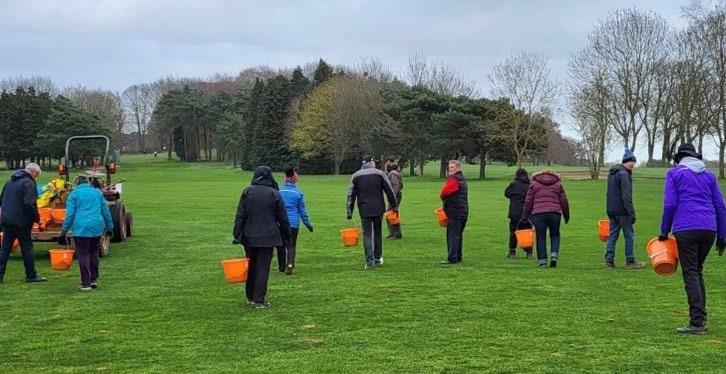
On Wednesday 24th April, at 5pm we will be heading out onto the Main Course with some of the Greenkeeping Team, armed with buckets of divot mix.
You are invited to help, and the more hands we have the more ground we can cover.
After spending a couple of hours on the course, we’ll be heading back into the Clubhouse for food and a drink as a thank you for your help. If you would like to volunteer, you can sign up in the Pro Shop.
Please, let us know in advance that you will be attending so that we can ensure we have enough buckets, food, and drink to go around. See you there!
If you can’t make the Divot Party, then you can still make a huge impact by repairing divots during your round.
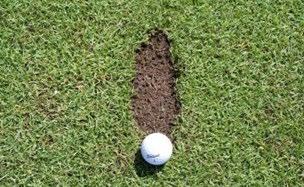
We will all cause divot marks at some point during our golfing lifetime. The most important thing is what we do when this happens.
Continued On The Next Page
Finding and replacing the lump of grass that was removed is always the best option for repair. If there are still roots and soil attached to the divot, step gently on it to help the roots contact the soil.
Divot bags are provided at the first tee of the Main course, and divot boxes are available on all the par three tees. These are filled with a sandy seed mix, which when put down onto divots will encourage the growth of new grass in these damaged areas. The sand is used to improve seedto-soil contact, stop seeds from blowing or washing away and aid drainage during the germination process. The more hands we have putting this divot mix down, the less damage we will all see.

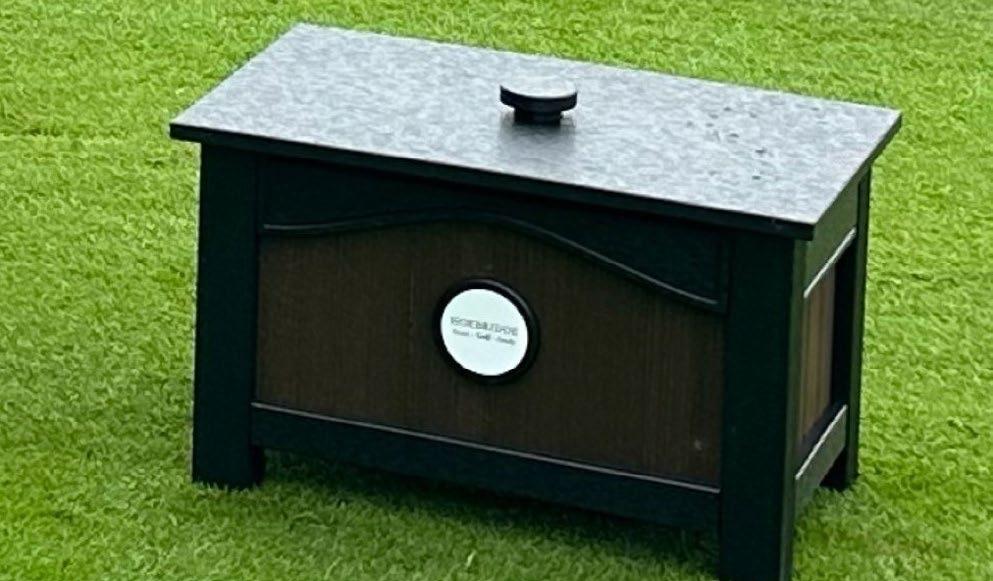
On the greens, repairing your pitch marks has a hugely positive impact on protecting the grass root system and on maintaining the playability for all members and visitors across the day.
To the right is a reminder on how to repair a pitch mark:
Correct repair will help protect the grass root system and benefit all members and
visitors to the course.
1. Insert the pitchmark repair tool just outside the back of the pitchmark
2. Lever the turf towards the centre of the pitchmark
3. Repeat this motion from all sides of the pitchmark
4. Gently tap the repaired area with your putter. This action stretches undamaged turf over the pitchmark, providing instant recovery.
1. Do not replace the loose piece of turf taken out by the ball. It will die and delay the healing process.
2. Do not pry up the centre of the depression with the pitchmark repair tool as it exposes soil and will delay the healing process.
3. Do not insert the pitchmark repair tool and twist it. This only damages more turf. Whilst the greenkeeping team have been battling the elements out on the golf course, we have been busy getting season-ready across the rest of the site.

At the start of March, Pirate Golf received new astroturf across the remaining nine holes, finishing off the two-year refurbishment of the course. A new fridge, freezer and barbecue have been delivered to aid our food and beverage service and we took delivery of a new electric Marshal buggy at the start of April.
Continued On The Next Page
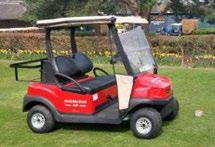
Having planted hundreds of daffodil bulbs in 2023, it was fantastic to see them come into bloom. We are now preparing for our summer flowers, with many of the seeds being hand-grown by our green-fingered F&B Manager, Connor. We’re very excited to see his beautiful displays later this Spring.
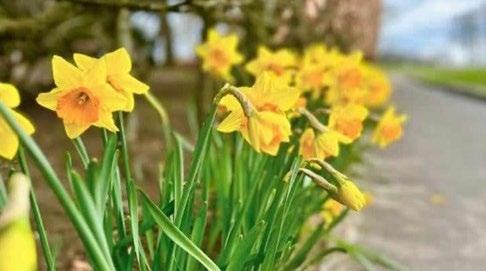
We are super excited to have the TaylorMade tour truck visiting us on Wednesday 8th May from 1pm to 7pm.

This is a great opportunity to try out new TaylorMade Clubs with advice from expert customer fitting technicians via a one-hour appointment and a tour of the truck.
£25 fitting fee, which will be refunded on any purchase over £300. Plus, a free TaylorMade goody bag for orders over £300 and express prioritised delivery on all orders placed on the day. Keep your eyes peeled for further information over the coming month or see the pro shop to reserve your space.
Finally, thank you to all of you who renewed your golf membership during the main renewal season. For those of you who renewed your golf membership on time before 1st April 2024, or who successfully paid your April direct debit, renewal vouchers will be issued as a thank you. These vouchers are a small gesture of our appreciation for all you do as members of Hoebridge. They will be available for collection from the pro shop during May 2024. We will issue a reminder as soon as the vouchers and renewal gift are in and ready for collection.
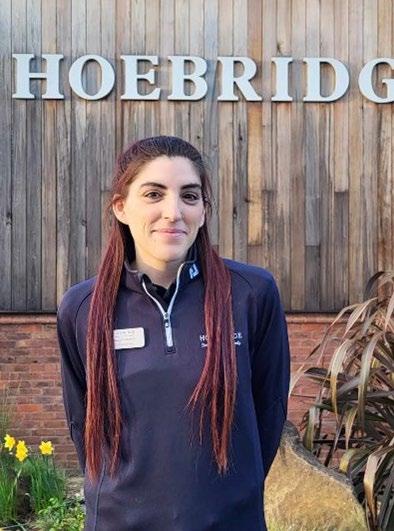
Thank you for your ongoing support and have a brilliant golfing year.
Sarah Employee of the 1st Quarter – MelCongratulations to our employee of the 1st Quarter – Mel!
Mel joined Hoebridge two years ago as an F&B Assistant and since then has been promoted to F&B Supervisor. Mel’s progression has been fantastic to see. Always hardworking and with great attention to detail. Mel ensures our food services run smoothly and that you as members are always looked after.
Thank you for all of your hard work and support Mel.

Happy springtime to you all!
I have been looking forward to this spring more than others, mainly because the rain is starting to get warmer! I have had enough of cold rain, well to be fair I have had enough of any rain.
Despite a very difficult start to the year, the team and I have been busy completing some of our winter projects, with the majority now coming to an end. We’ve also been working to ensure we are seasonready, well, as best as we can with the amount of rainfall we have received.
The greenside bunkers on the Main course 5th & 10th holes are complete. Not only are they visually improved, but they will drain better too. They will be back in play very soon, as we are just waiting for the turf around them to root down before they are made available.
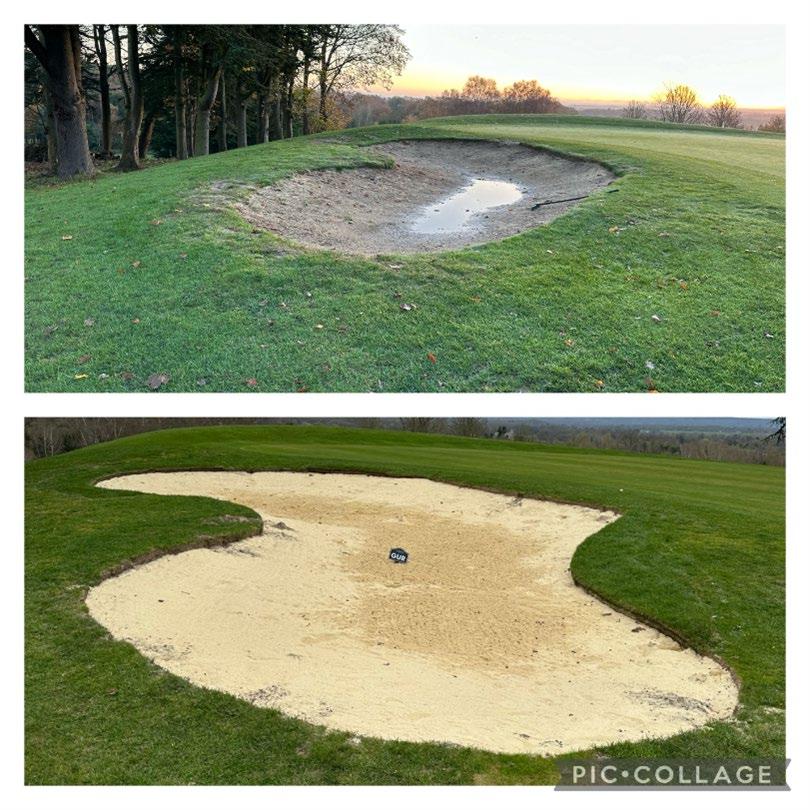
Two irrigation issues have been fixed and are ready for the season. The right-hand side approach head has been reconnected on the 12th hole after being taken out when the “pond” was dug, and we have installed irrigation into the 7th tee on the Shey Course, which historically has been missing.
At the start of April, we carried out path work, with us re-edging and topping up the surfaces across many of our high-usage paths. Ian, our greenkeeper mechanic has been working hard on sharpening all the mowers, repairing and fabricating and generally making sure all the machinery is being looked after so that our kit is working as efficiently as possible.
The team have even managed to get some mowing in amongst the rain showers and the fairways are starting to look like golf courses again. There are still some of the recent and historic tree work that we need to move away from playing areas, but we will be leaving some piles of wood as eco piles, these will provide habitat for lots of fungi, invertebrates, and mammals, which in turn will provide a food source for our resident birds and other larger mammals.
Twenty new trees have been planted to replace the ones we had to take down for safety reasons. The course waste that was behind the 9th green has been cleared away and the area has now been sown with a grass and wildflower mix, for shady areas, so hopefully we get a nice splash of colour in this area this summer.
Last newsletter I asked whether any member would like to help in building bird boxes. Thank you very much to member Chris Rodgers who provided some wonderful boxes. Chris’s bird boxes, along with some that I made have now been installed around the courses and some have new residents already! You may also have spotted some tennis balls on sticks - the balls were kindly donated to us by Byfleet Tennis Club and hopefully these will be perfect nest sites for the harvest mouse.
Continued On The Next Page
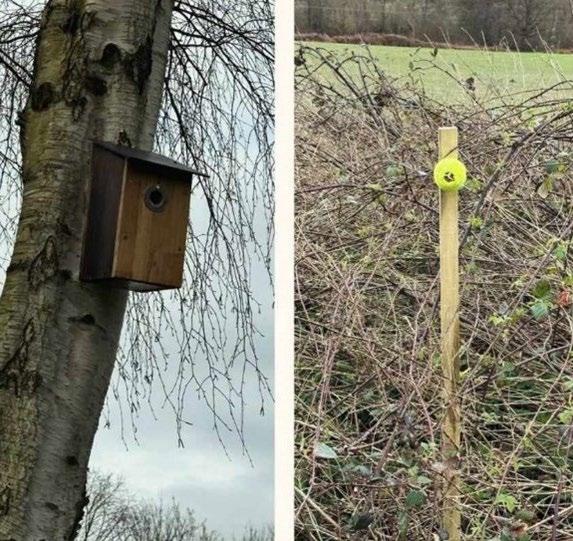
Thatch – what is it, why do we need it and how does it affect drainage?
Our greens, especially on the Shey and now Main courses are struggling to drain away the amount of water that is landing on them from the excessive rainfall we have had.
Whilst we do not often see excessive puddling on our greens, the amount of water they hold onto makes them very soft.
When they become this soft, we are physically unable to get our machinery onto them to cut and maintain.
The record-breaking rain over the last six months, especially, has put us in a position we have never been in before. No one feels the frustration of this more than me.
Over the last few months, you will have heard Sarah or myself regularly talking about the amount of rainfall we have had, the wetness of the greens and the main reason for this being the build-up of excess organic matter, or thatch at the upper levels of the greens, so what is thatch?
Thatch is a layer of living and dead plant material which builds up naturally over time. It comes from grass leaves and stems growing and dying, and from clippings from mowing sitting above the soil profile and between the grass plant blades (the bits you see).
Some thatch is good and is required in golf greens to stop the surface from erupting from the impact of a ball being hit into it and to withstand golfer traffic. But too much thatch will cause soft, spongy greens, especially after rainfall.
Thatch acts as a sponge where you can squeeze water out of it when wet. On the flip side in summer, it can dry out too much and cause dry patch problems where the thatch turns hydrophobic and won’t absorb water. In the summer, we can manage the effect of thatch through irrigation, but we are limited in managing the effect of very heavy rainfall.
To understand the thatch level at Hoebridge I have carried out several tests on some of the Main course and Shey course greens over the last couple of years.
Most recently, we have been recording the amount of water held within these thatch levels. One simple way of getting a quick understanding of thatch levels is to use the hole changer to remove a plug and then use our very accurate moisture meter to take measurements starting at the top and working down in sections. The results all showed that the top 40mm was extremely wet and then as I worked down the sample the moisture dropped significantly, more in line with levels that I would expect to find in wintertime. The table shows one set of results.
Continued On The Next Page
Understanding how much thatch our greens are holding, allows us to understand what needs to be removed and where to establish the most beneficial balance of thatch for both the health of the green and drainage.
Most thatch will accumulate in the upper profile (top 0-50mm) which means we can attack it with various methods such as scarifying, hollow coring, sand-filled linear aeration (the operation we carried out last summer) and solid tine aeration. Furthermore, working sand into the thatch profile helps to firm up surfaces, keep the thatch from getting too tight and allow pore space for water to move through, as well as allowing oxygen to reach bacteria and fungi which can naturally occur in the soil profile and which feed on thatch and help turn it to humus.
The weather has held us back from carrying out much thatch removal work on the greens this winter. However, as soon as we can get some more settled dry weather then we will be carrying out solid tine aeration and backfill the holes with sand.
We will also be carrying out regular scarifying across 2024 and taking micro cores. We won’t be going crazy with lots of topdressing at this present time as this can bury the thatch, but we will be applying some to help smooth the surfaces.
In September we will be carrying out a larger hollow core on the Main and Shey greens where we will immediately be working sand back into the holes.
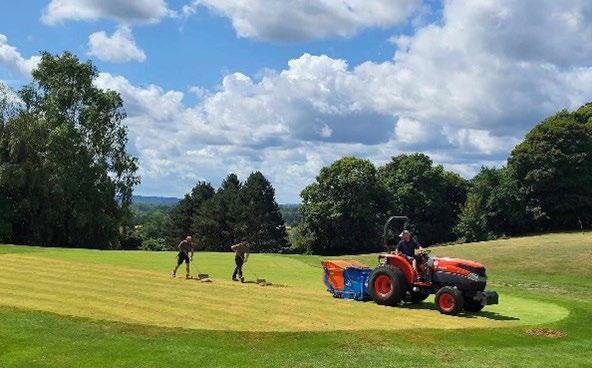

This combination of larger hollow coring work, and regularly scarifying will begin to decrease the levels of thatch in our greens.
This work, albeit disruptive, is necessary if we are to have more playable greens in the winter and in turn much better greens in the summer.
Once the thatch is at a preferred level, and water is moving into the soil profile quicker, we will be able to assess whether any further drainage is then needed.
This won’t be a one-year fix, and it will take a few years for us to decrease the thatch down to where it is most efficient.
Of course, we hope that the level of rainfall received over the last six months does not happen again, meaning that we don’t see this extreme effect of our greens holding onto water. But if it does, all this thatch removal work will go towards improving the situation.
Let us hope we get some warmer, dry weather very soon.
Happy golfing from the greens team.
Barry
We are constantly working as a team to improve the experience of all members and visitors to Hoebridge Golf Centre and often the pace of play on the golf course can determine how enjoyable the day has been.
We would ideally expect a fourball to complete the Main Course in no more than 4 hours and 15 minutes and it is the responsibility of those playing and the job of the warden team to ensure that this is a realistic target.
We are constantly monitoring the timings of the Main course including start times, pace at nine holes and finishing times to identify issues and take action to ensure the golf course keeps flowing. If action needs to be taken, this could range from polite encouragement to pick up the pace of play and catch up with the group in front, being asked to pick up and walk the hole to ease congestion, or finally being asked to leave the golf course if the pace doesn’t improve. This expectation of maintaining a good pace of play also includes those playing in competitions or matches. Whilst we understand the desire to play your best round, slow play for your round has a knock-on on effect for every other member and visitor following.
If you do experience issues with the pace on the golf course, please feel free to alert our warden team or contact the pro shop immediately and we will ensure that one of the team will come out and deal with the issue. By working together, I am confident that we can address these recurring issues
and improve the enjoyment of everybody who plays golf at Hoebridge.
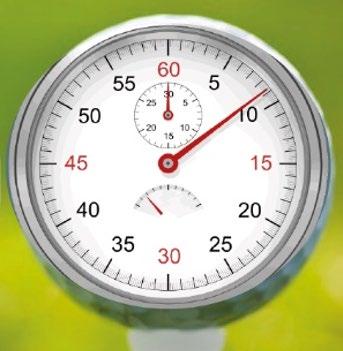
With that in mind, please find below some advice taken from Golf Monthly on simple ways to positively influence the pace of play:
Try to assess your shot as you are walking to the ball and (where possible) try to measure distance and try to select your club while others are playing.
During competitive play, if you are in any doubt as to where your ball has ended up play a provisional ball to keep delays to a minimum. The impact of losing a ball and heading back to play a provisional could add 7 – 12 minutes to your round (assuming three minutes to search and a walk back to where you hit it from).
Don’t be embarrassed to wave people through if they are playing faster than you and the course ahead is clear. Nobody likes feeling hassled and nobody likes being held up.
Leave your clubs in the right place to make a speedy exit to the next tee, do not leave the flag to be put in by the last person putting out and do not mark your scorecard on the green!!
Ian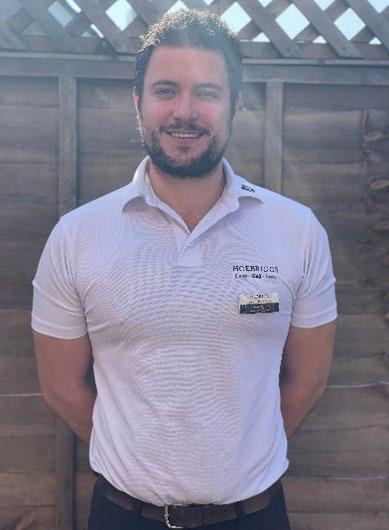
As you are hopefully fully aware of our fitting suite now, I just wanted to introduce some of this year’s exciting new products from our manufacturers.
Starting off with drivers:
Ping G430 10K.
It’s called MAX 10K because it eclipses the 10,000 g-cm² combined MOI threshold, setting a record and making it our straightest and most forgiving driver ever. A fixed backweight, our largest head profile, and a Carbonfly Wrap crown help G430 MAX 10K launch the ball higher with less spin for consistently longer and straighter results.
Cobra DarkSpeed.
The Cobra DARKSPEED drivers feature an improved aero shape, a larger PWRSHELL Face, and a PWR-BRIDGE which has been placed lower and more forward to deliver more ball speed and distance than ever before.
With three models to choose from, (LS, X, and MAX) the DARKSPEED range utilises specific weighting configurations to tailor performance for each player. The DARKSPEED drivers have enhanced trajectory tuning to provide more adjustability options for a better ability to optimise spin and forgiveness.

Fairways:
TaylorMade QI10 Max Fairways
Departing from the traditional, the Qi10 Max Fairway boasts an ultra-high MOI construction that combines low CG projection with a confidence-inspiring 200cc head. Internal mass pads are positioned for maximum forgiveness with weight moved to the extreme low back, making this fairway TaylorMade’s easiest to hit in the line.

Irons:
Ping i530
If you desire a compact, blade-style head and your primary goal is more distance, the new i530 is engineered to launch the ball higher and farther with the consistency and predictability to hit shots closer to the hole. Distance gains come from multiple sources including a highly flexible forged face in a hollowbody design that will add yards with tighter dispersion.

Vokey SM10
Great wedge play comes from three things - Shot Versatility, Distance and Trajectory Control and Maximum Spin. Nothing does more to improve your play than fresh wedges, especially when those wedges are Vokey Design SM10 fit to your needs. Great wedge play comes from three things - Shot Versatility, Distance and Trajectory Control and Maximum Spin.

Please don’t guess and buy ANY golf equipment online. We can price match major online retailers, plus our fittings are free.
See you soon,
Jonny
Ryan Stonehouse H&F Manager
Hello from the Health Club.
Some exciting additions to the Health Club team this April! Firstly, Becca Cummins will be joining the team full-time following her move from our Membership & Events department, Becca has already built quite a following with her Barre Fitness class that launched in January. Our members are looking forward to seeing a lot more of her in the class studio and on the gym floor putting her PT skills to good use. Dan Ash is also joining the Personal Training team; Dan brings a wealth of coaching experience and cannot wait to teach a fantastic range of classes, helping our members achieve their health goals.

Matthew Hewitson has joined the treatment team offering an excellent range of chiropractic services, already well known to some of our golf pros Matthew is ready to help diagnose and treat back pain and muscular injuries.
Swiss ball core exercises
Laying swiss ball hamstring curl

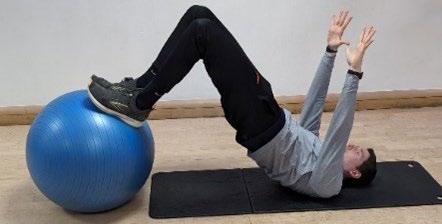
Perform this exercise by pulling your heels towards your glutes and aiming to keep your hips up. Then extend the legs and repeat. This is great for working the hamstrings and will also engage the core and glutes to keep you stable.
Swiss ball jack-knife
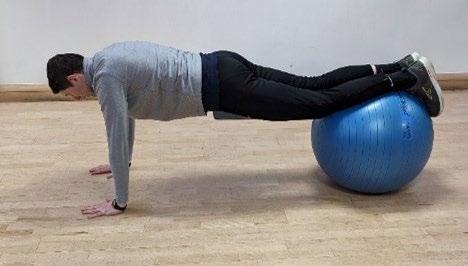

By bringing the knees in and away from your chest, this exercise will fire up your core massively whilst engaging the shoulders to keep your upper body stable.
Swiss ball pike


This exercise is a progression of the previous and will be more of a challenge. Aim to contract the core and glutes to raise the hips towards the ceiling whilst keeping your legs straight. This will improve core and hip flexor strength.
Swiss ball plank stir the pot
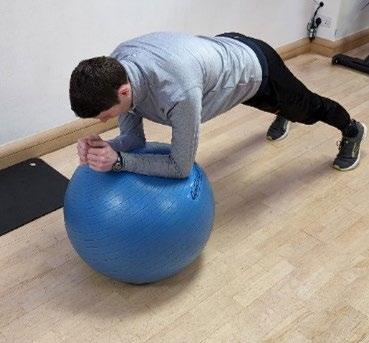
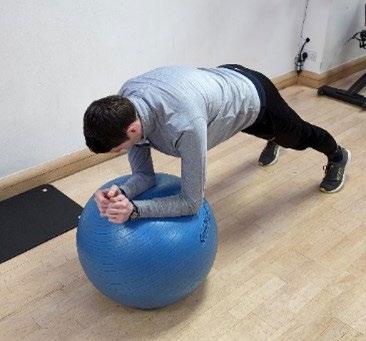
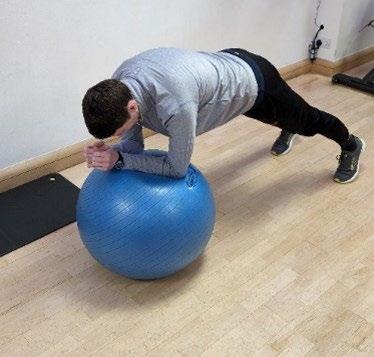
This exercise is a progression of the previous and will be more of a challenge. Aim to contract the core and glutes to raise the hips towards the ceiling whilst keeping your legs straight. This will improve core and hip flexor strength.

